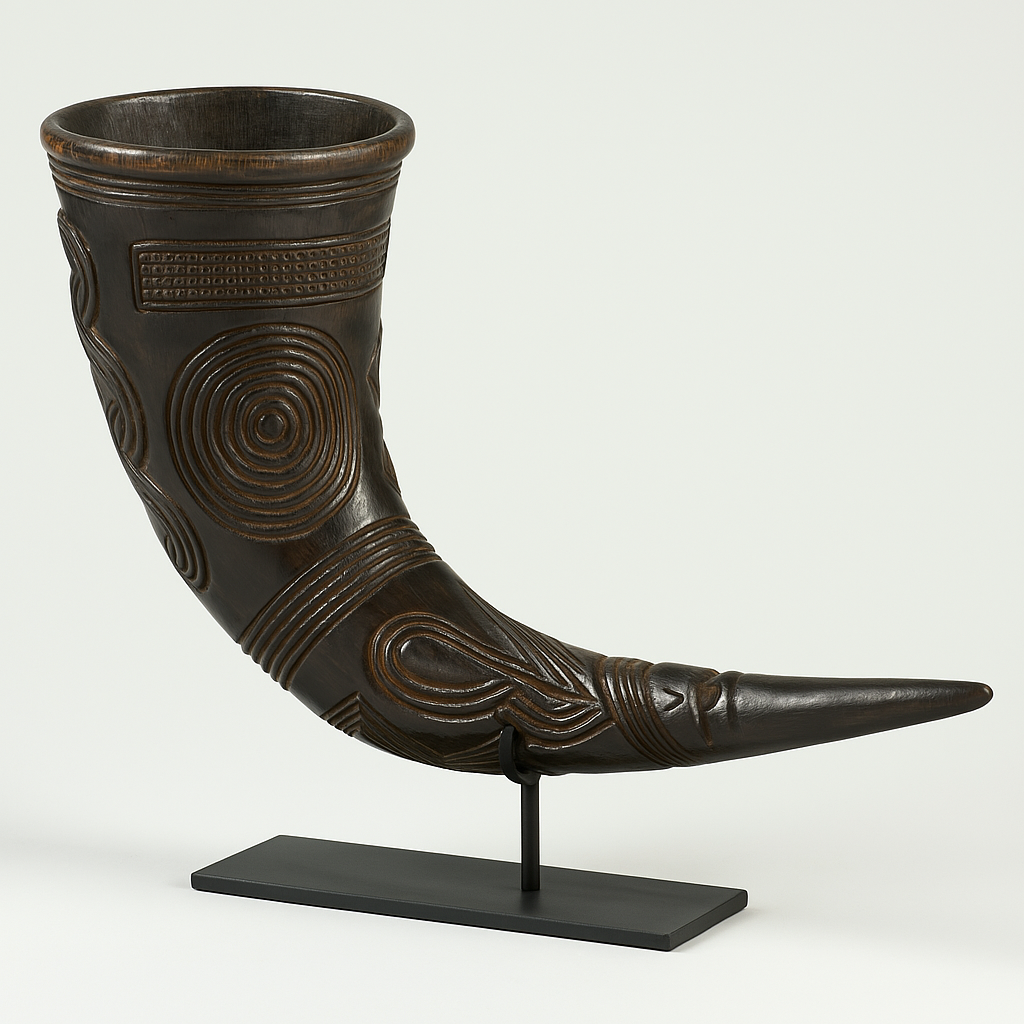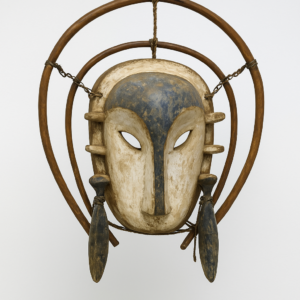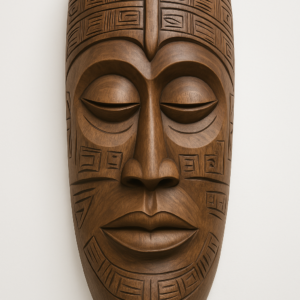“Kombe la Urithi,” translated as “Cup of Heritage” from Swahili, is a masterfully hand-carved ceremonial palm wine vessel fashioned from the horn of a large antelope or buffalo, evoking centuries-old African craftsmanship and ritualistic symbolism. This heirloom-quality piece is more than a utilitarian object—it is a sacred conduit of cultural memory, oral tradition, and communal identity, particularly among communities of Central Africa where palm wine is used as both a ceremonial drink and a spiritual libation.
In African societies, drinking vessels such as this were not mere tools but sacred totems. The act of drinking palm wine often carried spiritual and communal significance—used in marriage rites, coronations, funerals, and ancestral offerings. The curved form of this cup mimics the natural bend of a horn, but its surface is a rich tapestry of symbolism: intricate spiral carvings, zigzag motifs, concentric rings, and textural inlays, all of which point to the metaphysical values of continuity, protection, and ancestral cycles.
The horn itself has long been a symbol of vitality and authority across African cultures. Antelopes, buffalo, and other horned animals are seen as symbols of abundance, strength, fertility, and guardianship. Their horns were reserved for elders, chiefs, spiritualists, or griots (oral historians), who were responsible for preserving collective memory. The choice of material in Kombe la Urithi thus carries deep spiritual reverence—it embodies nature’s gift transformed into a sacred artifact through human skill and ancestral blessing.
Measuring approximately 9 inches in length (horn tip to base curve) and 2.5 inches at its widest opening, the cup is surprisingly lightweight given its density, estimated at 1.8 Ibs. It is mounted elegantly on a minimalistic matte-black metal base, which elevates the piece both literally and metaphorically. The contrast between the horn’s rich, dark caramel tones and the muted base creates a visual harmony, letting the object’s natural form and carvings take center stage.
Every detail carved into this piece tells a story. The spirals carved onto its flanks represent the cyclical nature of life and death—birth, growth, decay, and rebirth—central tenets in African philosophy. Zigzag patterns mimic water paths, serpent trails, or spiritual journeys—evoking the flow of knowledge, energy, or even tears. Grooved bands around the mouth of the cup may have indicated lineage or tribal affiliation, particularly if the cup belonged to a royal house or ritualistic guild.
The tactile quality of the cup is just as compelling. Decades of handling have burnished the horn to a warm, lustrous patina, a natural varnish that tells of years of use in ceremonies, perhaps passed from generation to generation. One can imagine it being raised during a naming ceremony, a peace negotiation, or a night of storytelling beneath the stars.
Palm wine itself, or mnazi in Swahili, is a sacred drink in African cosmology. It is said to be alive—fermenting naturally, changing in flavor by the hour, symbolizing life’s own volatility and unpredictability. In many African communities, pouring a libation with palm wine before drinking is an act of respect to the ancestors, seeking their guidance, protection, and wisdom. Kombe la Urithi, with its carved elegance and ancestral gravity, was designed for just such occasions.
The piece reflects artistic sensibilities seen among the Kuba, Luba, or Bembe peoples—renowned for their carved regalia, ornate tools, and symbolic codices expressed through objects. The use of symmetry, geometric symbolism, and material integrity all point to an origin steeped in philosophical and artistic depth.
Displayed in a contemporary home or cultural setting, Kombe la Urithi is not just a conversation piece—it is a historical archive. For collectors of African antiquities, ethnographic art, or ceremonial vessels, this cup stands as an exemplar of traditional African utility elevated to sculptural beauty.
Moreover, in an age of rapid digitization and disposable design, this palm wine cup reminds us of something timeless—the human need to connect, celebrate, remember, and honor. It bridges the sacred and the domestic, the individual and the collective, the past and the present.





Reviews
There are no reviews yet.